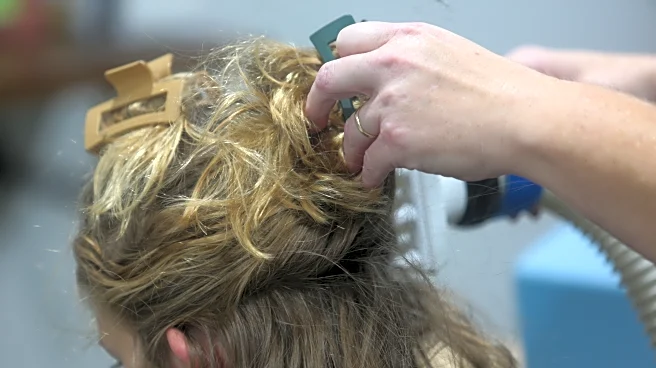What's Happening?
Dr. Kenji Oyasu, an emergency room doctor in Chicago, has shared a peculiar story about removing a large Yankee Candle from a patient's rectum. This incident, which he discussed in a TikTok video, is part of a broader issue where nearly 4,000 people are hospitalized annually in the U.S. due to foreign objects lodged in their rectum, according to a 2023 study published in The American Journal of Emergency Medicine. The patient, who had engaged in a risky activity with his girlfriend, required medical intervention to safely remove the object. Dr. Oyasu explained the medical procedure involved, which includes intubation and anesthesia to relax the patient's muscles for safe extraction.
Why It's Important?
This story underscores a significant, albeit unusual, medical issue that emergency rooms face regularly. The presence of foreign objects in the rectum can lead to serious health complications, requiring professional medical intervention. The fact that a substantial number of these cases involve sexual objects highlights a need for public awareness and education on safe practices. The demographic data from the study, indicating that most patients are middle-aged males, could inform targeted health campaigns. Additionally, the medical community must be prepared to handle such cases with sensitivity and expertise.
What's Next?
The medical community may continue to see similar cases, prompting discussions on how to better educate the public about the risks associated with inserting foreign objects into the body. Hospitals might consider developing specific protocols or training to handle these situations more effectively. Public health campaigns could be initiated to raise awareness about the potential dangers and encourage safer practices. Furthermore, research into the psychological and social factors contributing to this behavior could provide deeper insights and inform future prevention strategies.
Beyond the Headlines
This incident also raises questions about the cultural and psychological aspects of such behaviors. The prevalence of these cases suggests a need to understand the motivations behind them, which could be linked to broader societal trends in sexual exploration and expression. Additionally, the humorous or sensational nature of these stories often overshadows the serious medical implications, which could affect how they are perceived by the public and addressed by healthcare providers.












